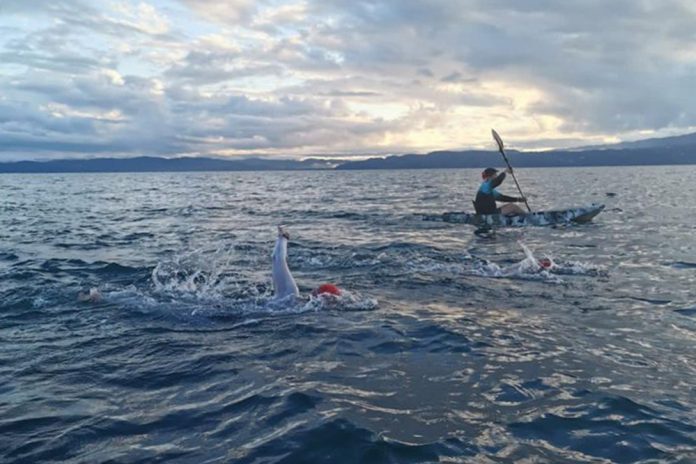Rocío Mora swims like a fish. She has practiced the sport for as long as she can remember: she started competing when she was six years old, and stopped at 18. But to practice open water, Rocío has had to learn many other skills, because this sport demands more than knowing how to swim.
About 10 years ago, Rocío—a 48-year-old architect, wife, and mother of a daughter, 19, and a son, 18— took up swimming as therapy for a back injury that left her almost unable to walk. But this time, she decided to try open water swimming.
She trained for pleasure, and participated in the first editions of the open water competitions at Punta Leona.
“I consider myself an amateur athlete. I swim because I like it,” says Rocío. “It’s my time for me, all by myself. It belongs to me. It’s something I do for myself, and I have always liked to challenge myself in everything: in life, in sports, in my profession.”
And so she has written her history in this sport. Today, she is an open water ultramarathoner. In other words, she has participated in open water competitions with distances greater than 15 km.
In the last ten years, Rocío has swum at every Costa Rican beach she could get to. She has crossed the Golfo Dulce many times—including twice in a row, a 28-km journey that took seven hours 32 minutes! She knows Lake Arenal like the back of her hand.
“I’m not afraid of it, zero!” says Rocío, when asked how she does it. “I swim anywhere, at any depth, at night, during the day, raining. I am fascinated by the freedom, and the contact with the water, and the level of consciousness that you attain with so many hours in the water. I compare it with a meditative state. I am focused on my own thing, I am enjoying it, I know that I am ready.”
Rocío is truly fearless. In the past 10 years,s he has competed in Swim around Key West en Florida (21 km), El Cruce from Cancún to Isla Mujeres (10 km), Swim Around Charleston in South Carolina (21 km), the four-day SCAR competition in the canyon lakes of Arizona (66.9 km), the Manhattan 20 Bridges Invitational Competition in New York (46 km in one day) and the Catalina Channel in California (34 km).
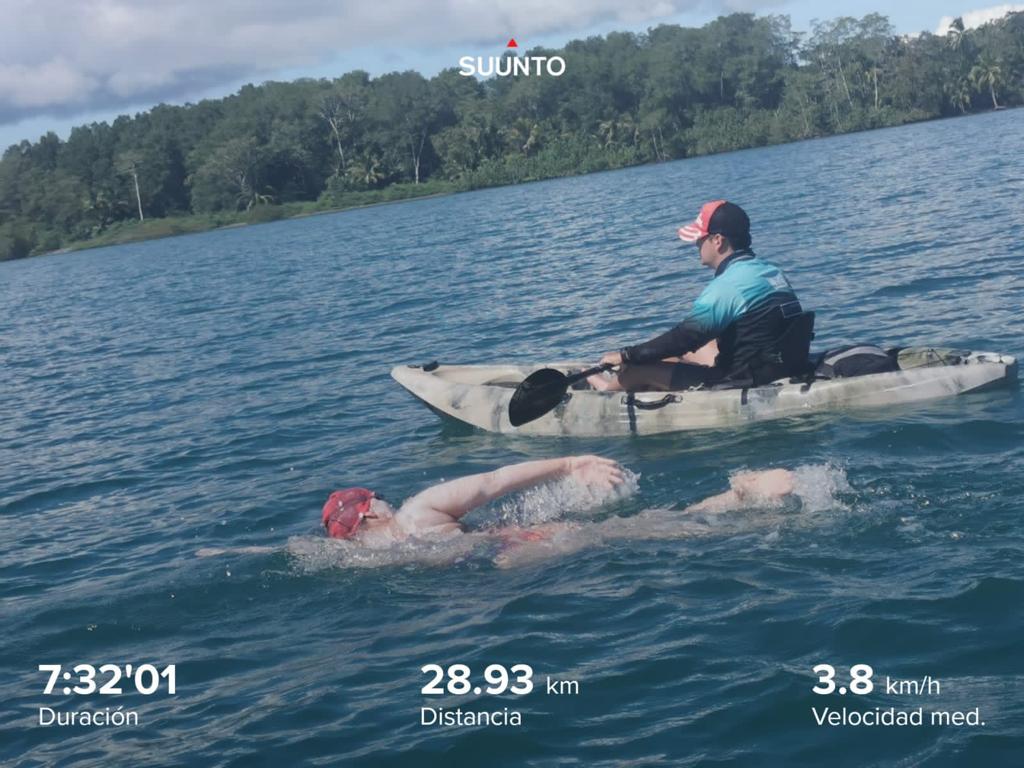
To be successful in those competitions, Rocío had to learn to swim in very cold water, down to 12 C (53 F), to beat ocean currents, to swim in the dark, and to build a support team that can understand her needs just by looking at her. She has also had to learn how to hire support boats abroad and even how to get a space in a competition.
In 2022, Rocío plans to participate in two competitions that are part of the list of the 13 toughest competitions in the world: one that will take up to 14 hours in waters that average 12 C, and which only 10 people have completed. To celebrate her 50th birthday, Rocío will complete the Triple Crown in open water by crossing the English Channel between England and France. As the crow flies, this is a distance of 34 km, but a swimmer can travel up to 50 km dodging currents. Only 60% of those who start the swim manage to finish it.
“In Costa Rica there are very few people [who practice the sport],” says Rocío. “It’s not that they can’t. It’s that they haven’t dared.”
What does Rocío want people to say when they see her swim? “If she can do it, so can I.” She adds that success depends on preparation. “It’s like being well-prepared for an exam. You have to have studied the swim beforehand: the temperatures, the distance.”
Rocío’s successes have been achieved thanks to the accompaniment of her friend Carolina Mora, who is also an open water ultramarathoner; her husband and children; and her coach, Kurt Niehaus.
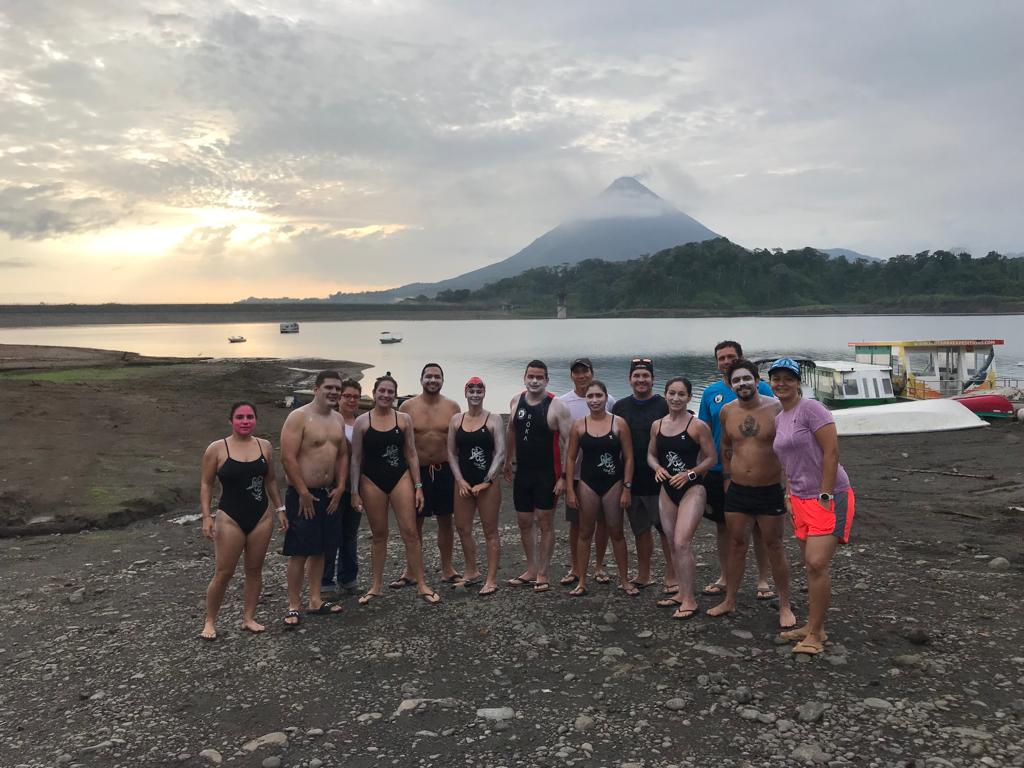
“We hope to be paving the way for people to dare,” Rocío says about her achievements and those of her friend Carolina. “I had no one in Costa Rica to ask about these swims, or how to acclimatize to the temperatures, or contact a boat. Now they can ask us…. We put Costa Rica within the open water community. Now, they know us.”
That’s why Rocío, Carolina and Kurt have another challenge lined up for themselves, and for all those who practice this sport throughout the country: bringing the world’s experienced ultramarathoners to enjoy Costa Rican waters.
“In the Golfo Dulce I’ve swum with dolphins under my belly, with 30-meter whales next to me, with sea turtles. I’ve swum at night in the Golfo Dulce with bioluminescence, so that when I put my hand in, you can see blue bubbles,” she says. “They’re spectacles that we have: how beautiful to take advantage of them. In Costa Rica, all our seas are lovely to swim in.”
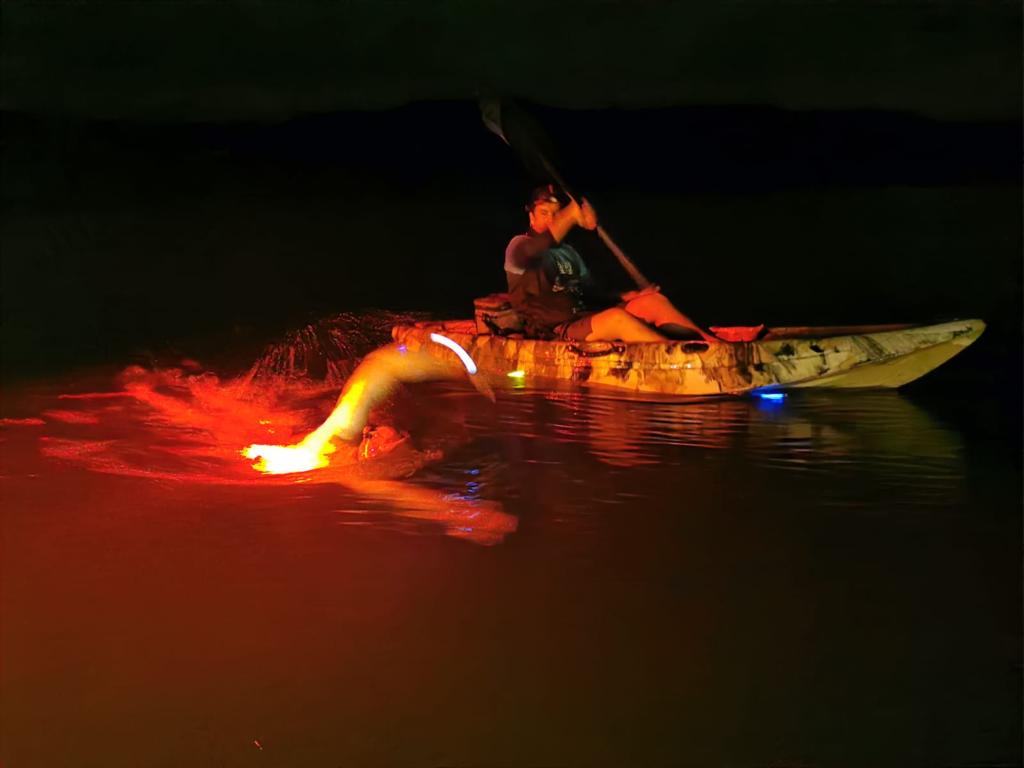
Advice from an expert
What is your favorite place in the Costa Rican waters to swim?
I love Guanacaste, the beaches of Flamingo, Penca, Catalina, Danta. All those beaches are beautiful and the sea is always calm. A calm sea is important for swimming, especially for people who are not too experienced.
In Playa Penca there is a little island in front that we visit. We leave Penca, pass Catalina, swim to the Island and come back. It is a swim that, for me, is like a little stroll.
Mantas or Punta Leona are very pretty beaches and they are closer. They are good beaches to go for just the pleasure of swimming.
What is your favorite place in the Costa Rican waters to train?
It depends a lot on what one is training for.
For example, I did my [long trainings] for Arizona in Lake Arenal; I love swimming and training there. The conditions in Arenal are always challenging: a terrible wind, waves, rain, fog, or maybe the lake like a swimming pool. We have come across all those conditions, so it is very beautiful.
To train in a very rough sea, very strong, very heavy, we go from Mantas beach to Herradura, and we have to cross Caletas. That’s always tough. Of course, we are always accompanied by a boat.
We really liked training in the Golfo Dulce because there are several routes that can be done, which keeps you entertained.
What place do you recommend for those who are starting out in open water?
The thing is to find places that are like a bay, that are safer, and not to leave the bay for the open sea—especially if you are alone. I say that in Costa Rica you can swim on practically all the beaches.
There are several people who do workshops, generally at Mantas or Herradura, due to their proximity or because they are very quiet beaches. The sea is very shallow there. But go with experienced people who can guide you.
The Caribbean is very beautiful, but you can only swim in September and October. The rest of the year in the Caribbean the sea is very rough, and there are very low parts for the corals where you can cut yourself. In the Caribbean you should always swim with a guide, with people who know where the corals are, the reef.
In Guanacaste and Golfo Dulce you can swim all year round and it is beautiful.
What competition do you recommend for those who want to start competing in open water in Costa Rica?
Nowadays, there are lots of them. Start with any short one. The open water circuit offers short distances: there is a 1500 and 750 m for beginners.
The Punta Leona swim is a perfect swim for beginners. They now have two swims, one in April, the gold, and the silver in September.
What tips do you have for those who want to practice this sport?
It is important to say that you should never swim alone, because there are several dangers: from getting hit by something, to a boat coming and not seeing you.
You should only swim parallel to the beach. On beaches with a lot of waves like Playa Hermosa or Santa Teresa, I go to where the wave starts and swim parallel to the beach. Ideally you always have someone walking on the beach following you, or people who are swimming with you.
Longer routes must be done with safety buoys so that they can see us, and in the company of other people, never alone.
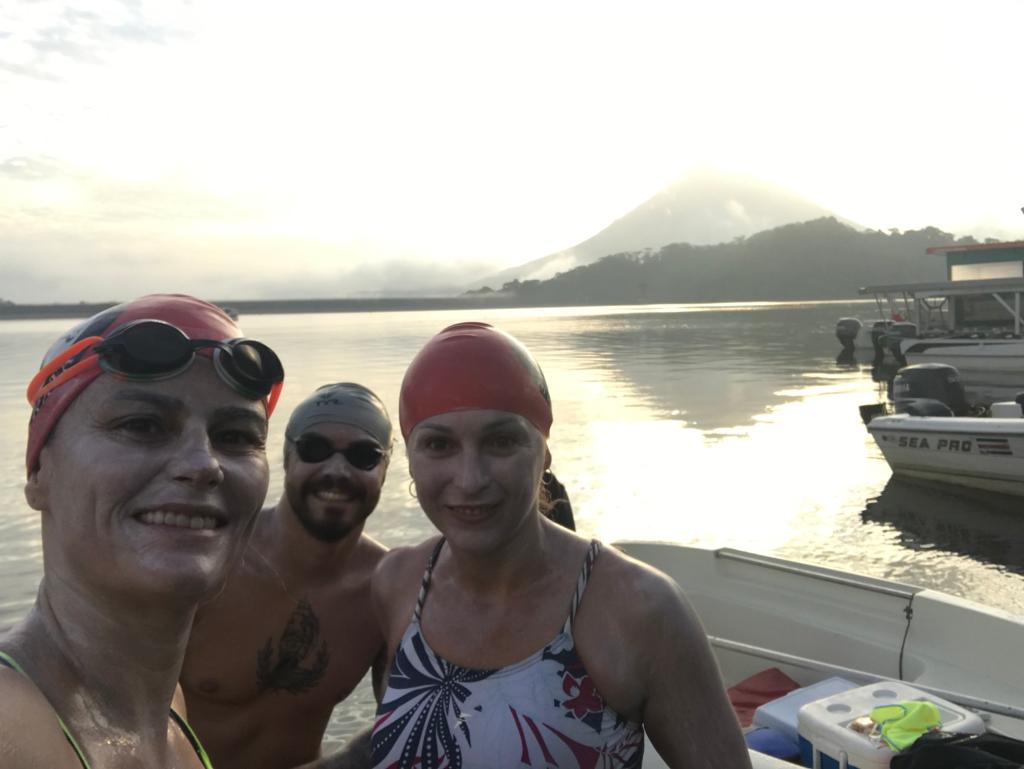
Follow Rocío Mora and her achievements on her Facebook page..


